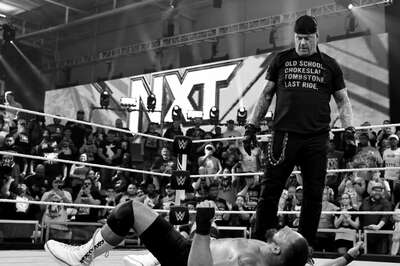
views
It has been a year since unprecedented violence took place in West Bengal after the Assembly election results were announced. Why has Bengal been suffering violence (both West Bengal and Bangladesh)? What was the original demographic composition of Bengal and how has it changed; and how this has affected the socio-political milieu in this region? This multi-part series would attempt to trace the origin of socio-political trends in the larger Bengal region (state of West Bengal and Bangladesh) over the last several decades. These trends are related to the evolution of Bengal over the last 4000 years. It’s a long journey and unfortunately most part of it has been forgotten.
When Bengal was again partitioned in 1947, Hindus in East Bengal (now known as Bangladesh) had to suffer a bloodbath. These developments also betrayed a distinct pattern, which had taken shape since the beginning of 20th century in Bengal.
To understand the pattern of this violence against Hindus in Bengal region, a closer study of riots in Bengal during the first half of 20th century is required. From 1905 to 1947, a series of anti-Hindu communal riots took place in Bengal. Except for ‘The Great Calcutta Killings’ of 1946, we hardly talk about these riots. If one takes a closer look at them, it becomes clear that what happened in Bengal in 1940s, during the Partition and in the subsequent decades was clearly written on the wall. The pattern had been set during a spate of communal riots which took place between 1905 and 1940.
A list of districts that were majorly affected by communal riots from 1905-1940 (Communal Riots in Bengal: 1905-1947; Suranjan Das; pp xvi) included Mymensingh, Pabna, Dacca (now called Dhaka), Tippera, Noakhali, Chittagong, Bakarganj in East Bengal and Howrah, Calcutta in West Bengal.
A look at five major riots which happened during this period would help us understand the present-day trend of communal violence in this region. These riots occurred in Mymensingh (1906-07), Calcutta (1918 and 1926), Dacca (1926) and Chittagong (1931). The communal riots in Bengal in 1940s, which turned into pogrom against Hindus, took the communal violence to a never-seen-before level. The period of 1940s in Bengal will be discussed in the next article; in the present article, we will look at how a distinct pattern of anti-Hindu violence established its roots deeply in Bengal in 20th century.
ALSO READ | The Bengal Conundrum: Partition of Bengal and the Growth in Muslim Separatism
Mymensingh Riots (1906-1907)
In 20th century Bengal, the first major incident of communal violence was witnessed in Mymensingh. The riots in Mymensingh which started in 1906 continued for several months. These riots began on April 21, when some Swadeshi volunteers tried to stop some Muslim shopkeepers from selling foreign products at a fair in Jamalpur area. The Muslim shopkeepers attacked these volunteers who were primarily Hindus. Soon communal violence had spread to other parts of the district. All strata of Hindu society were targeted and Hindu temples were desecrated. Sumit Sarkar mentions in The Swadeshi Movement in Bengal 1903-08 (pp 459), “Once started, iconoclasm of course gathered a momentum of its own and Muslims started smashing Kalibaris (temples of goddess Kali) and destroying family idols.”
Analysing the modus operandi of the rioters, Das observed (pp49-50), “Attacks were recorded on the huts of washermen, weavers, milkmen, fishermen, carpenters, potters, cobblers and other lower caste Hindus … Both official and non-official records cite instances of attacks on Hindu women. Rioters broke into homes and took away young widows, and women hid themselves in jungles for days to escape assaults. The honour of woman constituted the most sacrosanct feature of Hindu social ideology and violation thereof thus implied the total destruction of a Hindu’s honour.”
Das further notes (pp57), “… Certain … aspects of the riot such as attacks on lower-class Hindus, defilement of temples and idols, and careful exclusion of Muslim shops from looting revealed the overt communal consciousness of the crowd. In addition, the Muslim leadership came from religious preachers … the ideology which shaped and gave collective meaning to the actions of the crowd was perhaps fundamentally religious.”
Calcutta Riots (1918 and 1926)
In 1918, Calcutta witnessed riots for three days from September 9 to September 11. According to Das (pp 67), “The Muslim crowd … displayed a strong discrimination in their choice of target for attack … The Marwaris … faced the brunt of Muslim attacks. Several of them were stabbed on streets, some were killed in cold blood. Trams, palanquins and taxis were stopped at random to search for ‘Marwari sala’ who, if found, was deprived of all his belongings and often killed. Women and children were not spared. Marwari houses in Central Calcutta were attacked in broad daylight and valuables taken away. Widespread looting of shops also took place.”
Das significantly underlines (pp74), “The riot of September 1918 also anticipated many of the trends for future Muslim rioting in Calcutta – the mosque as an important rallying point, the upcountrymen as the main component of the violent crowd, the Marwari merchant as a favourite target of attack, and the vernacular press as a main forum for expressing communal animosities.”
In April 1926, riots again broke out in Calcutta and the bloodbath lasted till July. The scale of violence was unmatched in the history of Calcutta. The immediate reason for this riot was objection by Muslims to the music played by a Hindu religious procession while it crossed a mosque. More than 100 persons were killed and around 1,500 were wounded in these riots.
According to Das (pp86-87), “… Temples and mosques were besieged on a scale hitherto unheard of in Calcutta. During the initial phase of the … riot, as many as 11 temples and gurudwaras were desecrated. The desecration of these sacred spots was usually accompanied by the looting of the property.”
Dacca Riots (1926)
The Dacca riots broke out when Muslims objected to an age-old tradition of playing music in a Janmashtami (celebration of the birth of Lord Krishna) procession. They wanted this music to be stopped when the procession was passing in front of any mosque in the city. During the Dacca riots, Muslim crowds specifically targeted Sahas who were the leading traders in the town and Basaks who played an instrumental role in organising the Janmashtami procession. Their houses were attacked in a planned manner. During Dacca riots too, several Hindu temples and idols were desecrated and Hindus from all strata were targeted.
Chittagong Riots (1931)
The Chittagong riots broke out in August 1931. They differed from earlier riots as the local administration run by the British actively connived with the Muslim communalists to target Hindus. The immediate trigger for these riots was assassination of a Muslim police inspector by a revolutionary as part of India’s fight against the British. After the funeral of the inspector, a 50,000-strong crowd of Muslims, backed by the British administration, went on a rampage against Hindus. There were credible reports of direct involvement of local police in these anti-Hindu riots by eyewitnesses, which have been documented in inquiry reports of that time. The extent of violence against Hindus can be gauged from the fact that an Amrita Bazar Patrika report dated September 3, 1931 referred to the participation of even Muslim women and children in the looting.
These riots were a clear indication of an alliance between the British administration and the Muslim communalists and it was exploited to the hilt by Muslim League in 1940s. This unholy alliance resulted in two of the worst riots in 1940s – the Dacca riots of 1941 and the Great Calcutta Killings of 1946 – paving the way for Partition and massive anti-Hindu violence.
The riots from 1905-1940 had significantly three common traits which we often witness even today: Objection by Muslim communalists to playing of music in religious processions of Hindus in front of mosques; desecration of Hindu temples and idols during riots; and targeting Hindu women and business establishments during mob violence. The point to ponder is that this pattern, which seemed to have been set in Bengal in the first half of the 20th century, continues to haunt Hindus of this region. Is it a mere coincidence?
You can read other articles in The Bengal Conundrum series here
ALSO READ | The Bengal Conundrum: How Islamic Fundamentalism in Bengal Had Sown Seeds of Partition
The writer, an author and columnist, has written several books. One of his latest books is ‘The Forgotten History of India’. The views expressed in this article are those of the writer and do not represent the stand of this publication.
Read all the Latest Opinions here
















Comments
0 comment